Fuding White Tea: State of the Industry Spring 2022
Why is Fuding hands-down the best place for White Tea in China? We'd have to say It's because of the regulations laid down by the local government upon its farmers and producers to ensure that their tea is just that much better. The government limits daily production, outlaws pesticides, bans summer harvests, and much more.
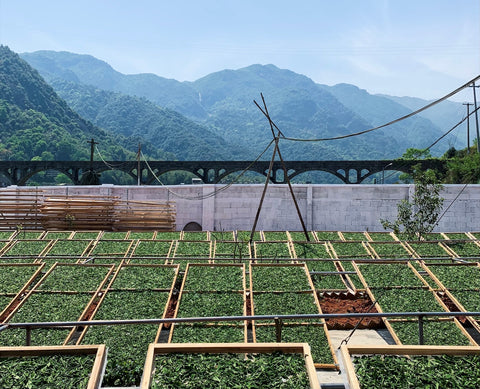
A tea farmer in Taimushan just outside of Fuding sent us this very interesting government circular outlining the new laws and regulations surrounding the growth and production of Fuding White Tea in 2022. The implications of this article are outstanding for understanding the current state and intended trajectory of the Fuding White Tea industry in the years to come.
It outlines designated harvest seasons, picking grade standards, and daily max yields, as well as prohibiting the creation of new tea gardens, further admonishing summer harvests, and reiterating blanket bans on pesticide use.
Without further ado, let's share the original document and translate it point by point to discuss in depth the implications!

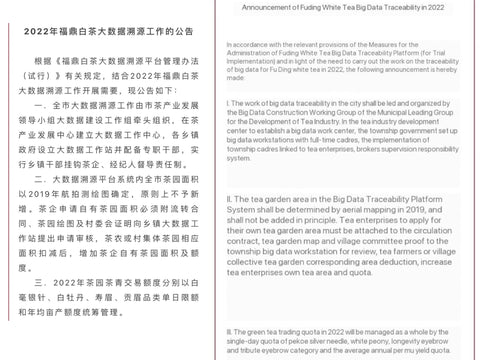
The first thing we see expounded upon in the circular is a preemptive explanation of how these new policies will be enforced and monitored. While the circular calls on all members of the community to monitor everyone's compliance with the new system (the 2018 circular mentioned a reward for anyone who turned someone else in for using pesticides in a Fuding White Tea garden), this year, the government will also be employing full-time party members to check that the new measures are being followed.
The second point, simply put is this, no new tea gardens may be created. This is a huge way for the Fuding municipality to keep the production quantity of Fuding White Tea in check. Not only does this maintain a manageable quantity of white tea to be produced, it also ensures biodiversity of the environment, as well as pre-approved soil conditions for White Tea gardens.
The third point reiterates this idea of limiting the quantity of Fuding White Tea produced by creating daily maximum quotas based on maximum annual yield. This should help prevent a flooding of the market and keep the price of Fuding White Tea fixed at a high level.
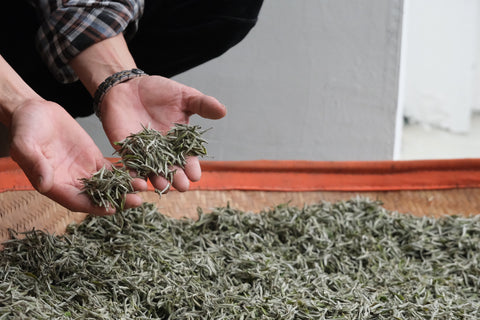
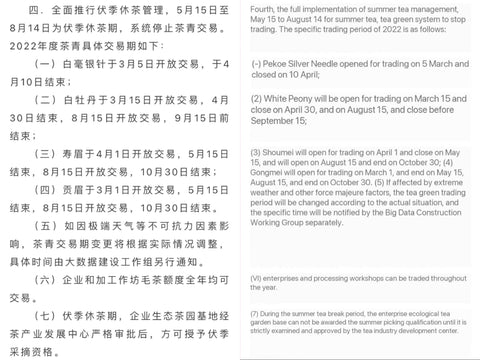
The next point outlines fixed harvest dates for Silver Needle, White Peony, Shoumei, and Gongmei.
Silver Needle harvest begins March 5th and closes on April 10th. These dates naturally depend on the weather, and often Silver Needle cannot be found in the wholesale loose-leaf market after April 5th. Within these dates there exist several grades of Silver Needle. There is no Autumn harvest for Silver Needle.

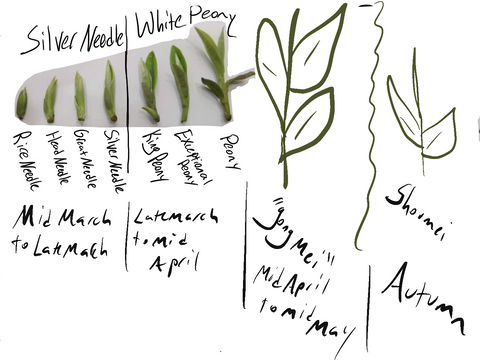
Baimudan, White Peony, harvest dates are set at beginning March 15th and ending April 30th. As pictured above, there are three grades of White peony that all fall within this harvest range: King Peony, Exceptional Grade Peony, and regular White Peony. One point of note here is that there is also an Autumn harvest of Baimudan beginning August 15th and ending September 15th.
Shoumei Spring harvest begins April 1st and ends May 15th, while the Autumn harvest begins August 15th and ends October 30th. While a certain amount of shoumei is produced in the spring, its dominant harvest season is Autumn, similar to the inverse of Baimudan, the dominant harvest season of which is Spring, though an Autumn harvest does exist.
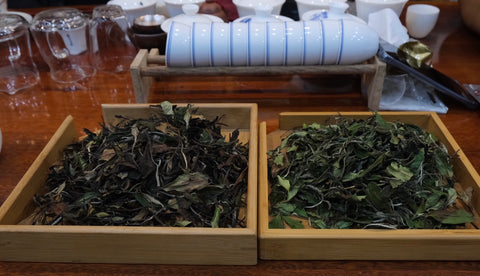
The gongmei harvest seasons are particularly interesting, as in 2018 the government circular banned the labeling of Gongmei. Since then it has returned to fill the gaps in harvest times and pick irregularities. A main reason why the government banned gongmei in 2018 was because a lot of farmers were using the heirloom white tea varietal (caicha) to produce it, and thus creating a mixed yield of quality in the categorization. The gongmei harvest times are thus: Spring begins March 1st and ends May 15th, Autumn begins August 15th and Ends October 30th. As seen gongmei has the widest range of viable harvest times, and thus might grow in popularity in 2022, as farmers and producers begin to classify anything that doesn't fit the other tea grades as 'gongmei'.
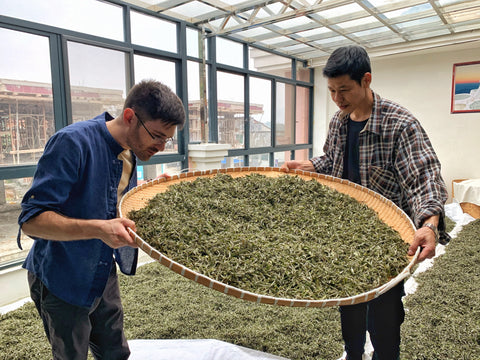
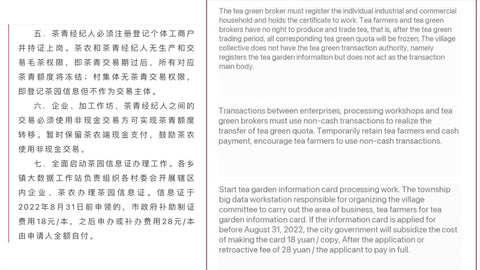
The fifth point here stipulates that only certified tea farmers may grow tea and only those with certified facilities may produce Fuding White Tea. This not only limits the quantity of white tea produced, but also ensures a level of quality among the production. As mentioned above, tea fields are monitored by areal mapping. Additionally it reiterates the freezing of buying and selling fresh tea outside of the stipulated harvest dates.
The sixth point is a means of enforcing this prohibition by admonishing cash transactions. While the government still allows some cash transactions, it is encouraging farmers to use traceable means of buying and selling tea in order to control the illicit buying and selling outside stipulated dates.

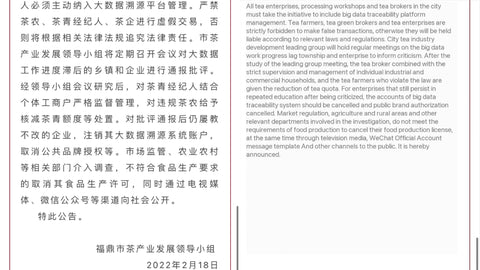
The final note in the 2022 Fuding Circular on White Tea Production is a request that all farmers and producers write recites and use traceable buying and selling methods for their transactions. This circular was posted February 18th in 2022, so is in anticipation for the 2022 harvest year of Fuding White Tea.
All in all, while some of these measures may be a little strict for the farmers and producers, these government regulations should ensure the continued quality of Fuding White tea in the years to come. A few noticeable trends we may see this year are elevated prices on Silver Needle (due to hard harvest dates and daily yield quotas) as well as an influx of Gongmei grade tea (as it has the longest approved harvest season).
We can't wait to begin sampling this tea and sending it worldwide!
Thanks for reading!